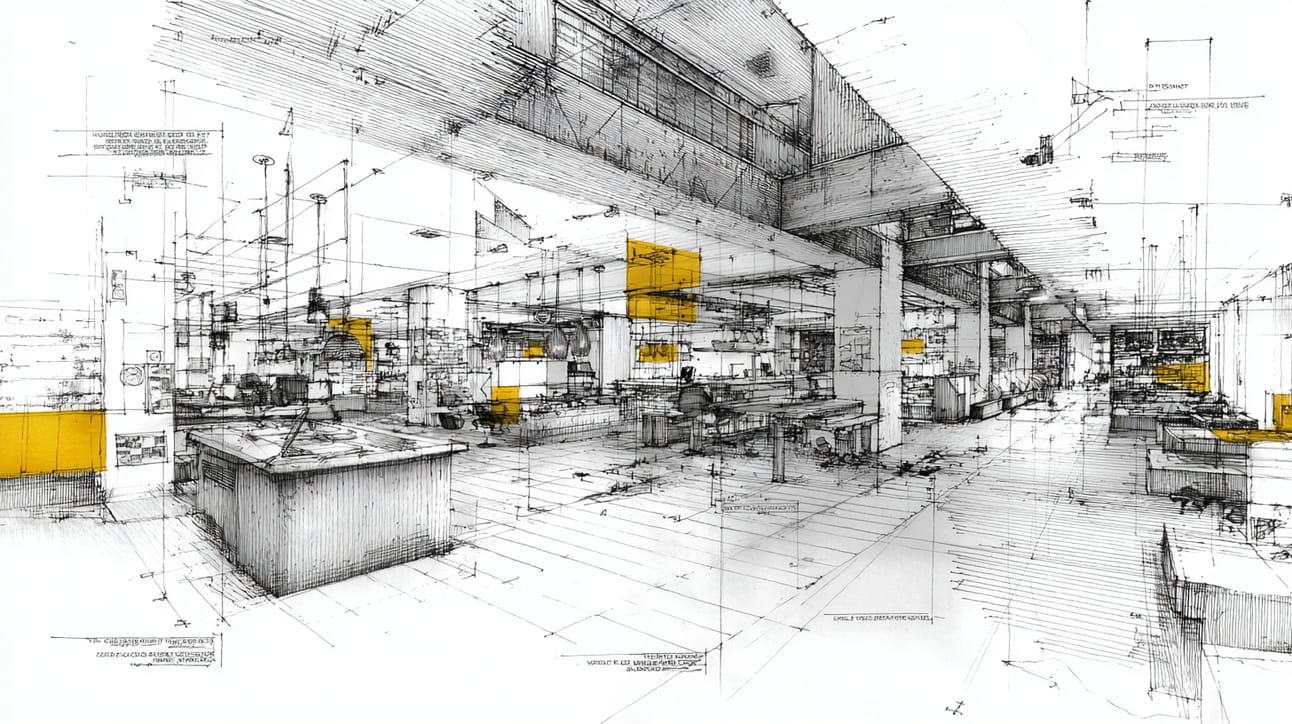When I first heard about Jonathan Anderson's appointment as Creative Director of Dior, I'll admit – I shrugged. Another designer shuffle at a luxury house. But then I read the details, and something clicked into place.
This isn't just another creative director announcement. This is a case study in what modern fashion leadership demands.
The Impossible Math
Let's talk about what Anderson is actually taking on: 18 collections per year. That's one collection roughly every three weeks across JW Anderson, his Uniqlo collaborations, and now the full Dior empire – womenswear, menswear, and haute couture.
The article's comparison to John Galliano is unavoidable and sobering. Galliano's tenure at Dior was legendary but unsustainable. The creative output mixed with an unforgiving schedule led to his collapse. As one industry expert put it: "It's a ridiculous workload."
Yet here's Anderson, stepping into this maelstrom with clarity about what he's signing up for.

The Art of Strategic Creativity
What strikes me about Anderson's approach isn't just his creative vision – it's his understanding that modern luxury leadership demands something different from the romantic notion of the solitary creative genius. Having spent decades watching brilliant designs die in development or lose their magic between concept and shop floor, I recognize this challenge.
His former CEO at JW Anderson, Simon Whitehouse, revealed something telling: "He copes because he can direct a team. Teamwork makes the dreamwork... Jonathan used to tell the fable about sharpening the axe, with the moral that rest and preparation will lead to being more effective in your work."
This is leadership philosophy that transcends fashion. It's about building systems that amplify creativity rather than consuming it.

The Heritage-Innovation Balance
What Anderson brings to Dior mirrors a challenge I see across the industry – how do you honor a brand's DNA while pushing it into new territory? His work at Loewe showed this: he didn't abandon the Spanish house's leather heritage, he revolutionized it with those iconic puzzle bags and balloon bags that somehow felt both new and intrinsically Loewe.
This isn't about throwing out the rulebook. It's about understanding the rules so deeply that you can rewrite them in ways that feel inevitable.

Why This Moment Matters
Anderson's appointment raises questions about what modern creative leadership requires. Here's someone who's proven he can navigate complexity at scale – who understands that luxury isn't just about creative vision, but about building ecosystems that sustain that vision.
The fashion industry has long romanticized the tortured artist model of creative leadership. But Anderson's approach suggests there might be another way – one that combines artistic vision with operational excellence, building teams that amplify rather than drain creative energy.

The Multiplier Effect
There's something profound happening when a designer can run multiple brands, collaborate across price points (from Uniqlo to haute couture), and maintain distinct creative voices for each. It suggests a new model of creative leadership – one based on systems thinking rather than individual heroics.
This isn't about doing more work. It's about doing work differently.
What Anderson understands – and what I've learned building merchandising systems that work – is that creative vision only matters if it can survive the journey from concept to customer. Whether you're launching a heritage collection or scaling an emerging brand, the magic lives in those systems that connect every touchpoint: from design concept through supply chain optimization, retail operations, and social media storytelling.
In my experience, the brands that scale without losing their magic have what I call "one version of the truth" – a disciplined approach to communication that keeps everyone aligned from design studio to final placement (shop floor, Shopify, social media, etc). This isn't about scary corporate systems – it's about the kind of discipline you can find in a well-built spreadsheet, clear processes that ensure the creative vision stays intact at every touchpoint.
Think of it as building and repairing the runway so the rocket ship can launch. Without that foundation, even the most brilliant creative concepts crash before takeoff. The modern product merchandiser isn't just managing inventory – they're strategically orchestrating how products live across every channel, creating true concept-to-commerce synergy.
In my experience building global merchandising operations across brands like Ralph Lauren and Burberry, I've seen how the most brilliant creative concepts can lose their sparkle somewhere between the design studio and the shop floor. The brands that truly scale are those where someone understands the entire ecosystem – where creative vision is supported by operational excellence at every level.
Anderson's challenge at Dior isn't just creative – it's architectural. How do you build systems that amplify creativity across 18 collections a year without losing what makes each one special? It's the kind of complex, cross-functional challenge that separates good leaders from transformational ones.

Looking Forward
As Anderson prepares for his first men's collection at the end of June, the industry will be watching not just what he creates, but how he sustains it. Will he find a way to "sharpen his axe" while meeting the demands of modern luxury?
His success or failure won't just impact Dior – it will signal whether the industry can evolve beyond its most destructive patterns toward something more sustainable and, ultimately, more creative.
The fashion world is holding its breath. I'm rooting for him to prove that there's a better way forward.
Sometimes the most important appointments aren't just about who's chosen – they're about what that choice reveals about where we're heading.
READ MORE:
Primary Source: In-Depth: How Jonathan Anderson Will Balance Dior's History with Innovation - TheIndustry.fashion
Creative Leadership Crisis: The Revolving Door of Creative Directors in Luxury Fashion - LinkedIn
Why the Creative Director Role Is Changing - The Zoe Report
Creative Director Changes in Fashion 2025 - Istituto Marangoni
Strategic Leadership: What Leadership Style Does LVMH Use? - Quarterdeck
Learning from LVMH's Bernard Arnault - Masters in Invest
Our Mission - LVMH
